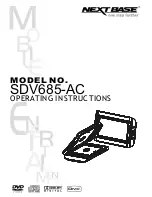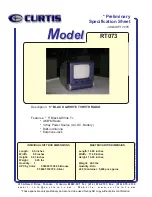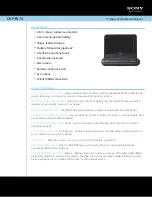
23
OPERATING MANUAL
STOPPING THE GENERATOR
Stop the engine using the following steps:
1. Turn of all appliances. Disconnect all loads to the generator. Never start or stop the
generator with electrical devices plugged in or turned on.
2. Allow the generator to idle for 2-3 minutes and cool down.
3. Turn the engine switch to the off position. Do not leave the generator until it has
completely stopped.
4. Turn the RCBO switch to off position.
5. Turn the fuel valve to off position.
ATTENTION: Ensure the generator is in a well ventilated area as the unit will remain hot even
after switching it off.
!
WARNING
Fuel and its vapours are extremely flammable and explosive which could cause
burns, fire or explosion resulting in death, serious injury and/or property damage.
DO NOT stop engine by moving choke control to “Start” position.
During an emergency:
If there is an emergency and the generator must be stopped quickly, push the engine control
switch to the OFF position immediately.
CARBON BUILD UP
Running the generator at low loads for extended periods can lead to carbon build-up on the
spark plug which may subsequently require cleaning. Carbon build up can be a problem on
generators as the loading on the motor can vary considerably. If the generator has been used
for less than 50% of rated load, there is a chance of carbon build up developing. Carbon build
up in the motor can be reduced by operating the generator at approx. 75% of rated load for
25% of the time the generator is used.
For instance, if the generator is used for 4 hours on low wattage, run the generator for 1
hour at around 75% of rating. If the generator is being used for solely charging a battery, it’s
recommended to run the 240V at around 500W for the generators up to 2000W if the charging
cycle will be ran for many hours. When charging is complete, try and run the generator at
around 75% of rated load for an hour or so. Unleaded fuel without ethanol generally gives best
results.
An Important Message about Temperature
Your engine is designed and rated for continuous operation at ambient temperatures up to
40°C. When your product is needed, your product may be operated at temperatures ranging
from -15°C to 50°C for short periods. If the product is exposed to temperatures outside this
range during storage, it should be brought back within this range before operation. In any
event, the product must always be operated outdoors, in a well-ventilated area and away from
doors, windows and other vents.
When operated above 25°C there may be a decrease in power. Maximum wattage and current
are subject to and limited by such factors as fuel BTU content, ambient temperature, altitude,
engine condition and etc. Maximum power decreases about 3.5% for each 1,000 feet above sea
level; and will also decrease about 1% for each-12.2°C above 16°C ambient temperature.














































